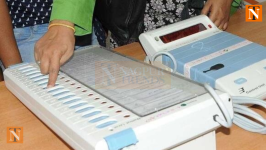Residents Blame Statue for Floods, Urge Immediate Action from Government

Nagpur, India- Ambazari flood victims are upset because the State Government has filed a statement saying that the decision to remove or move the Swami Vivekananda statue will depend on a study by the Central Water and Power Research Station (CWPRS) in Pune. Residents want the statue removed immediately because they believe it blocks the water flow from the Ambazari dam. However, one resident claimed the State Government is trying to keep the statue in place.
The Urban Development Department (UDD) submitted the statement to the Nagpur Bench of the Bombay High Court on Thursday, and a hearing on the case is set for the first week of April. The statement discusses concerns about the statute’s role in local flooding. According to Dr K H Govinda Raj, Principal Secretary of the UDD, whether to remove or move the statue will depend on the CWPRS study.
This study will check if the statute makes flooding worse in the area. “The High Power Committee has asked the Nagpur Municipal Corporation to get ready for quick action depending on the CWPRS report,” the statement said. It mentioned that if the study finds the statue does not cause major flooding problems, the government might consider keeping it.
Many Ambazari residents strongly oppose this, remembering last year’s bad floods. They say the statue blocks water flow and increases flood risks during the monsoon season. Advocate Tushar Mandlekar, who represents the petitioners in the High Court, criticized the government for trying to legalize what he called an illegal structure.
“Thousands of homes were flooded, causing huge financial losses. The government should care more about people’s safety than anything else,” Mandlekar said. Residents like Gajanan Deshpande and Dr. Archana Deshpande agreed, urging authorities to act in the community’s best interest. The statement also described the statue’s installation and beautification from 2012 to 2017, along with efforts by multiple agencies to reduce flood risks in the area.









